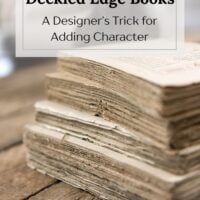From time to time, I like to share more about the antiques and vintage finds I truly adore—things like demijohns, ironstone, bergère chairs, clocks, and more. Today, I thought we’d talk about deckled edge books—something I keep buying even though I already have more than I could ever use!
There’s a certain kind of book that feels different the moment you pick it up. Its pages don’t line up in perfect order, but instead ripple ever so slightly, their edges feathery and uneven. That small detail—known as a deckled edge—instantly gives a book a sense of age, history, and handmade charm.
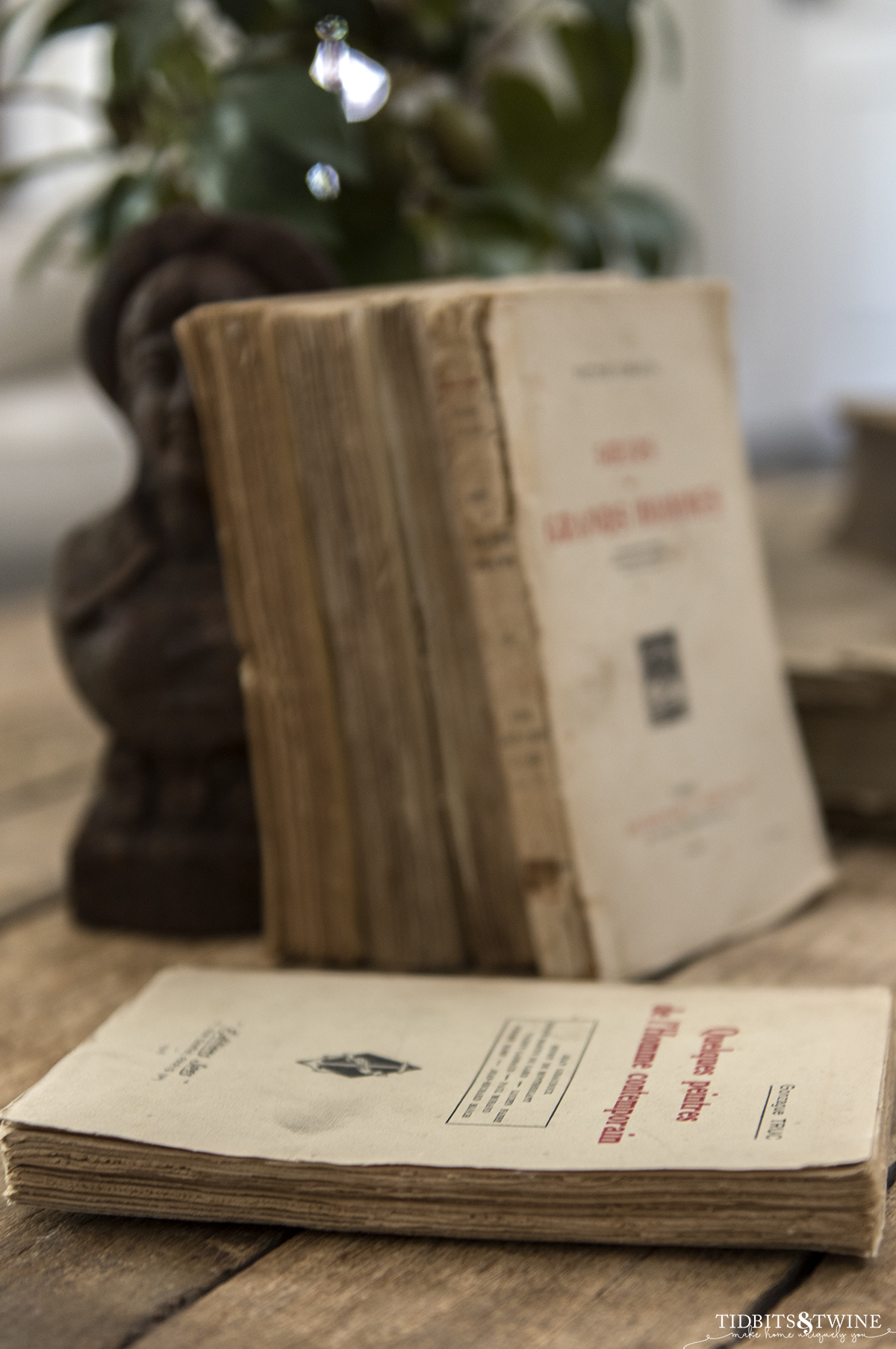
Love at First Sight
I still remember stumbling upon my very first deckled edge book at an antique fair. At the time, I didn’t even know what it was called—I just knew I couldn’t resist it. The irregular edges caught my eye, and the texture felt so different from the smooth spines and pages I was used to.
Now, whenever I see one, I can’t help but scoop it up, even though my shelves are already overflowing. There’s just something about the imperfection of deckled pages that makes them irresistible.
And let me say up front: this isn’t about collecting rare editions or even about reading content. This post is about decorating with these beautiful books—styling them in a way that celebrates their texture, history, and character.
What Exactly Are Deckled Edge Books?
The term “deckle” comes from papermaking. In the days when paper was made by hand, a wooden frame called a deckle held the pulp in place. As the pulp settled, the edges of the paper naturally formed soft, irregular boundaries. When dried and bound into a book, those uneven edges became what we now call deckled edges.
Deckled edge books are those with naturally uneven, feathery page edges formed when paper pulp seeps beneath the frame of the papermaking mold.
Unlike the crisp, machine-trimmed pages we’re used to today, deckled edges look and feel organic. Each sheet has its own character. Even when publishers reproduce the look artificially (yes, modern “faux deckled” editions exist), the idea is to mimic that old-world charm.
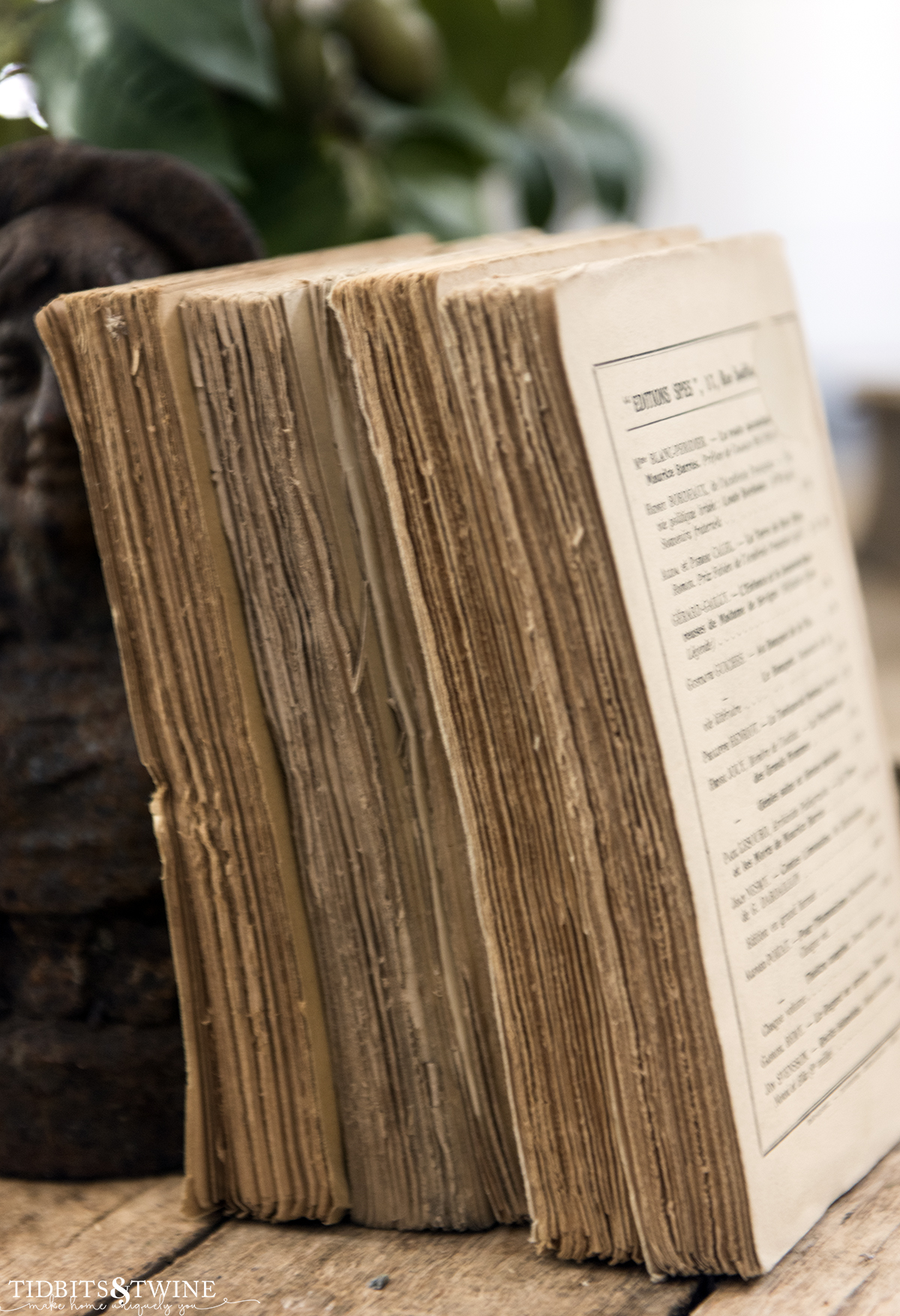
A Little History of Deckled Edges
- 1400s–1700s (Handmade Era): After paper spread across Europe in the 14th and 15th centuries, every sheet was handmade in molds. Deckled edges weren’t a design choice—they were simply the natural result of the process. If you owned a book printed during the Renaissance or even into the 18th century, it likely had deckled edges.
- 1800s (Industrial Revolution): With the invention of mechanized papermaking in the early 19th century, smooth, uniform pages became possible—and fashionable. Publishers began trimming off the uneven edges to achieve a neater, “modern” appearance.
- Late 1800s to Early 1900s: By the turn of the 20th century, most mass-produced books had straight, clean pages. Deckled edges transitioned from ordinary to extraordinary, showing up mostly in luxury editions or special press runs.
- Today: Deckled edges are rare in everyday publishing, but you’ll still find them in fine press books or as faux versions added for nostalgia and decorative appeal.
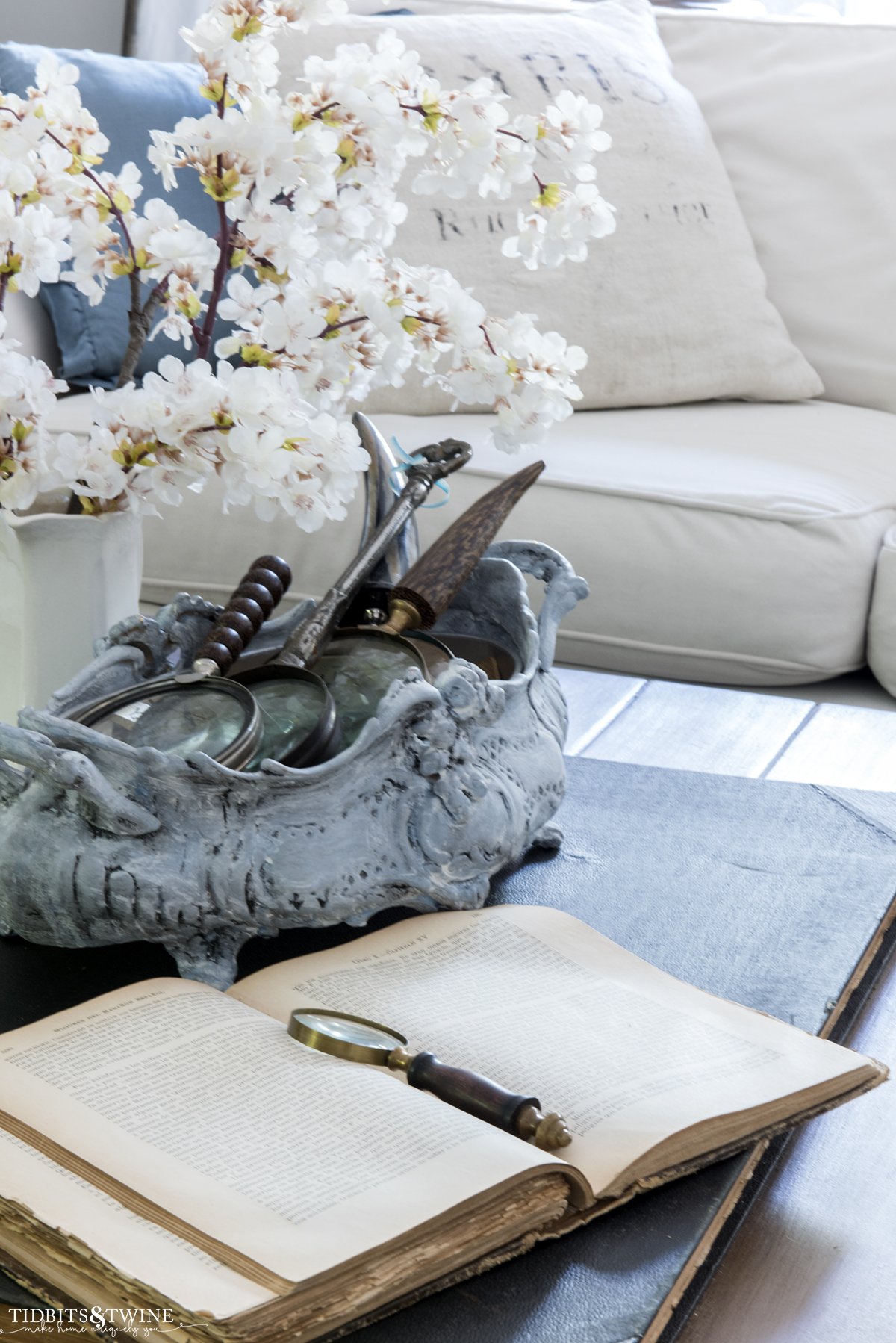
Why Deckled Edge Books Are So Loved (Especially for Decorating)
It’s not just their history that makes these books appealing—it’s the way they look and feel when styled in a home. Here’s why I love them so much:
1. They Add Texture
A stack of deckled edge books instantly brings softness and visual interest, especially compared to the sharp, uniform edges of modern books.
2. They Evoke History and Craftsmanship
Their handmade origins make them the perfect complement to antiques or vintage-inspired décor.
3. They Bring Warmth and Authenticity
The uneven edges feel collected, imperfect, and soulful—qualities that balance out sleek, modern surfaces.
4. They Style Beautifully
Deckled edge books work in stacks, vignettes, or open displays, catching the light in ways smooth pages can’t. And yes—you can even turn them around so the pages face outward. Some readers hate this look because the spines aren’t visible, but remember: this isn’t about reading. It’s about styling. Backwards or forwards, it’s about the overall effect in your home.
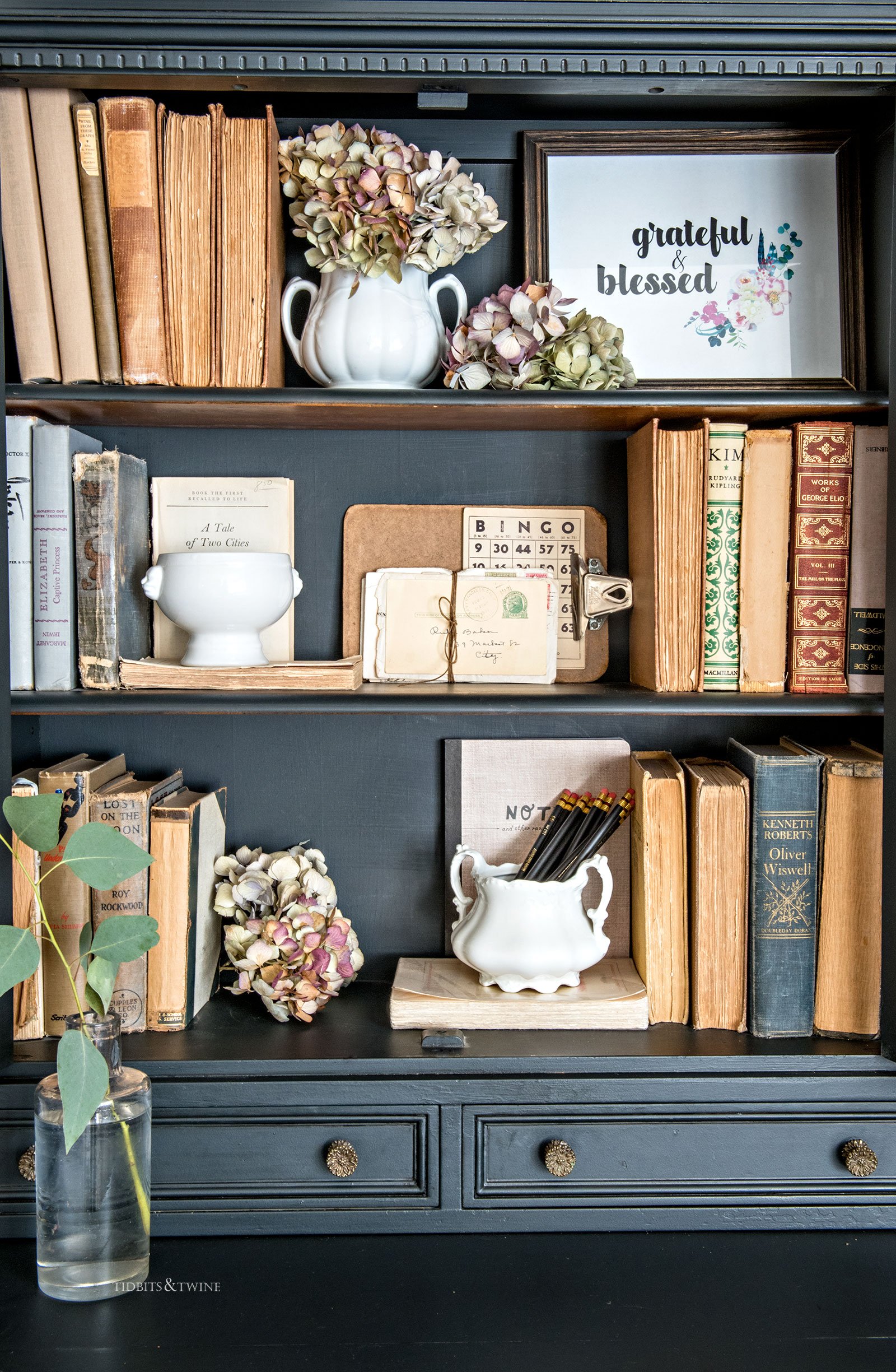
Styling Deckled Edge Books
Because of their texture, deckled edge books are especially lovely in décor. They layer in a way that smooth-edged books simply can’t. Here are a few ideas:
- Stack them on a coffee table so the uneven pages catch the light.
- Place them in vignettes with candlesticks, portraits, or antique objects.
- Mix them with modern books for contrast.
- Leave one slightly open to showcase the delicate page edges.
If you love decorating with books as much as I do, you’ll find even more styling inspiration in my post How to Decorate with Books.
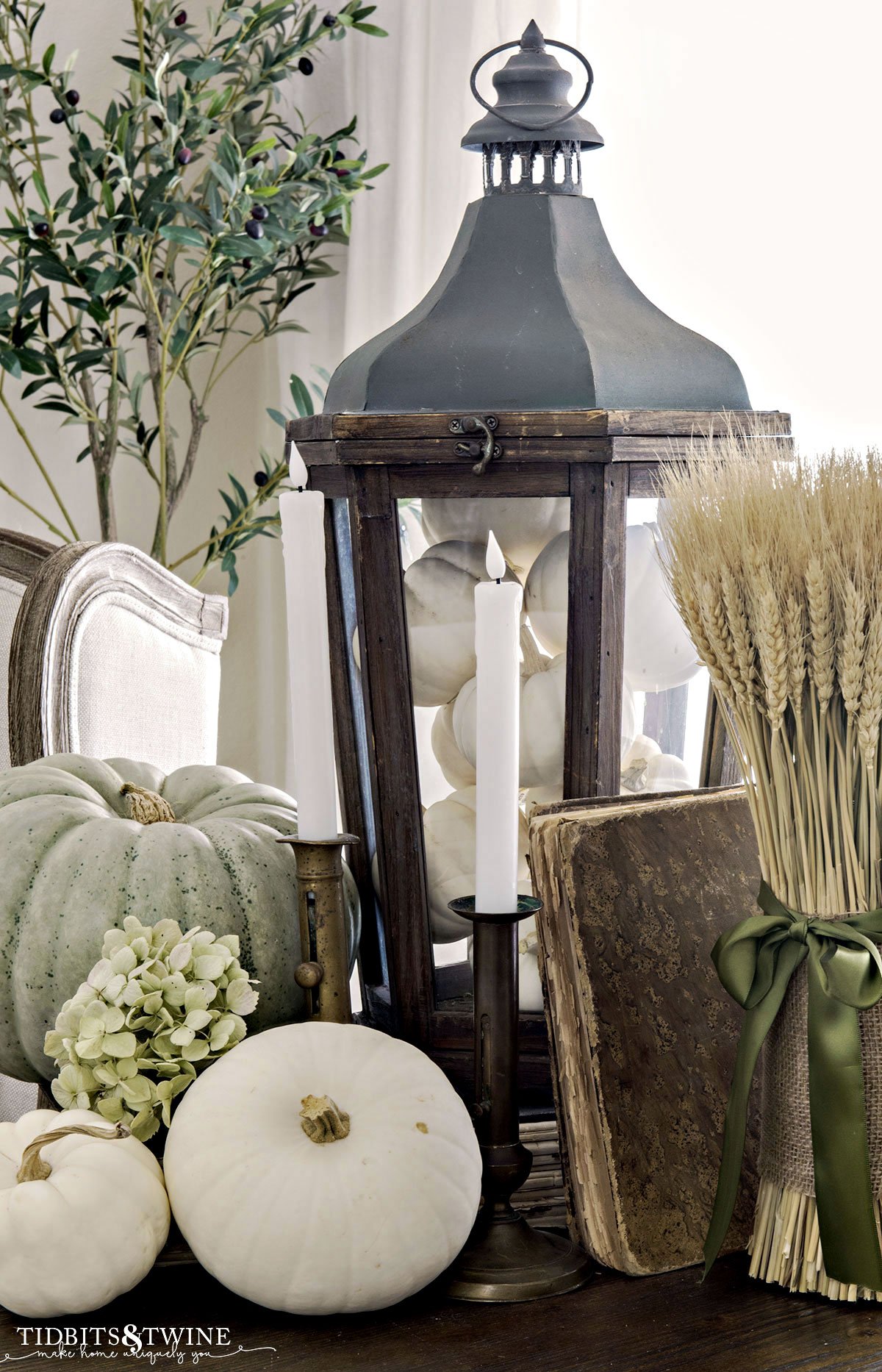
Collecting and Caring for Deckled Edge Books
Even though I’m not a book collector, I do think it’s helpful to know where to find them and how to care for them.
- Where to Find Them: Antique shops, flea markets, estate sales, and secondhand bookstores are treasure troves. Online rare book dealers often list them specifically.
- Spotting Genuine vs. Faux: Authentic deckled edges are irregular and vary from page to page. Faux versions often look a bit too perfect.
- Care Tips: Handle with care—those fragile edges can fray. Store them away from direct sunlight and humidity to preserve their beauty.
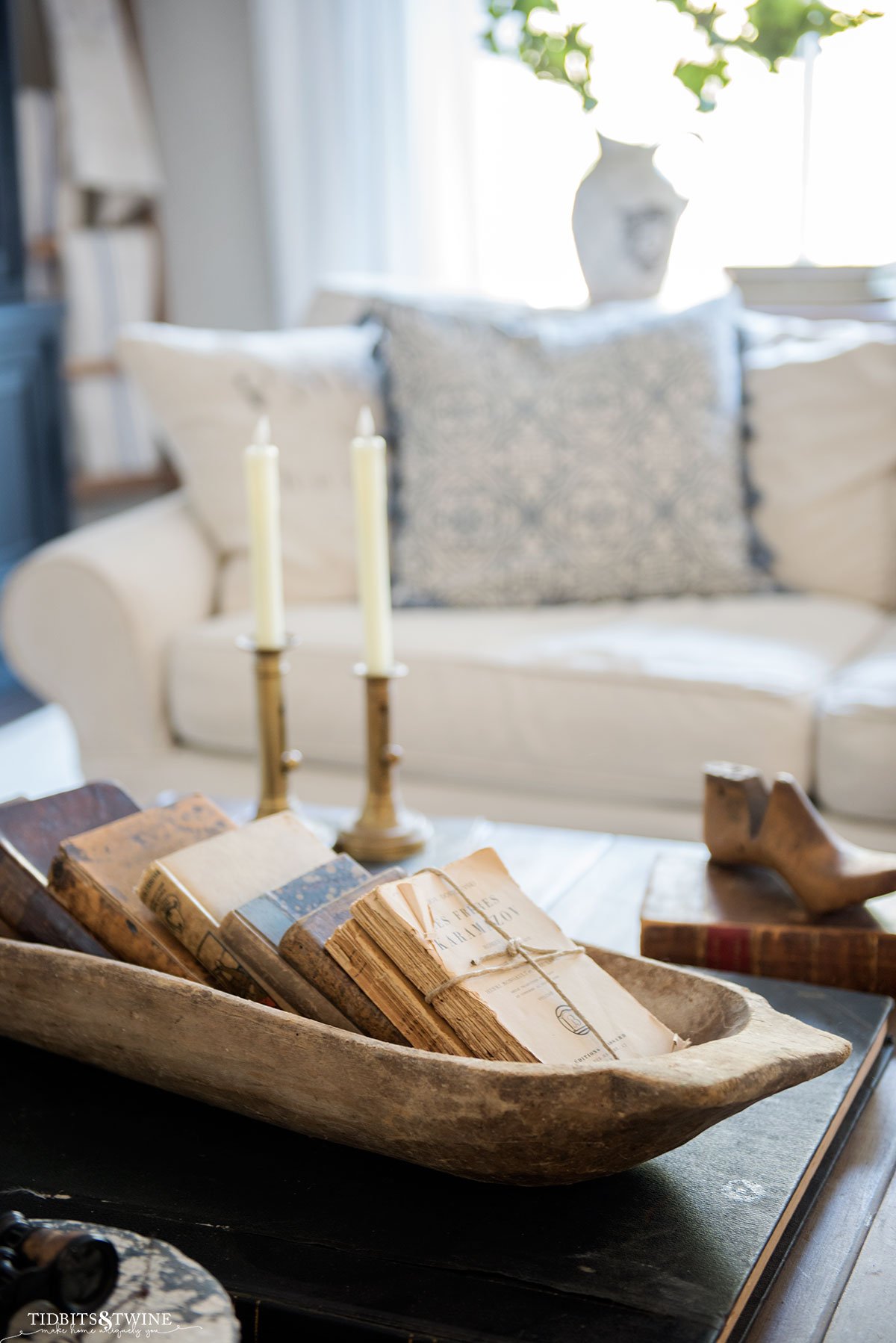
A Few Fun Facts
- Historically, some readers trimmed their deckled edges themselves for easier page-turning—so finding untrimmed antique books today feels even more special.
- Not all deckled edges signal a handmade book—sometimes publishers add them purely for aesthetic reasons.
- While not always more valuable, books with original deckled edges are often prized among collectors for their authenticity.
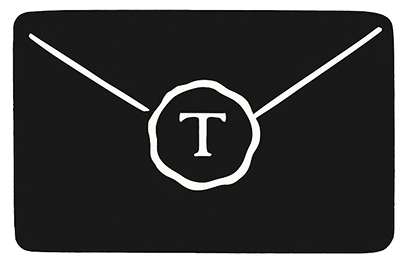
Did you know?There’s even a Japanese word for collecting books without ever reading them: Tsundoku (積ん読). It literally means “to let books pile up.” While I might not read every antique book I bring home, I love styling them—and that’s exactly the point. Books can be beautiful objects, not just reading material.
Final Thoughts
There’s something poetic about deckled edges. They remind us that beauty often lies in what’s imperfect, irregular, and unpolished. To me, they feel less like books and more like little works of art—pieces that carry history in their very fibers.
So the next time you come across a deckled edge book, don’t just think about reading or collecting. Think about how you can use it in your home—whether stacked, styled, or turned backwards on a shelf—to add charm, texture, and character to your décor.
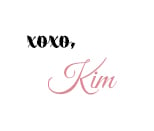
Join the Community
Let’s keep in touch! Get exclusive artwork plus the latest news delivered directly to your Inbox!

